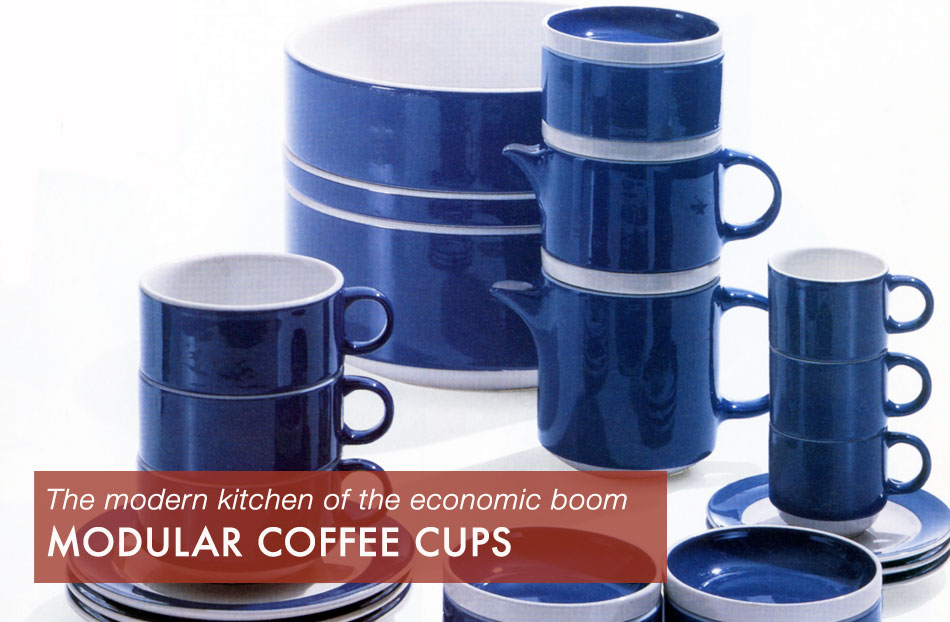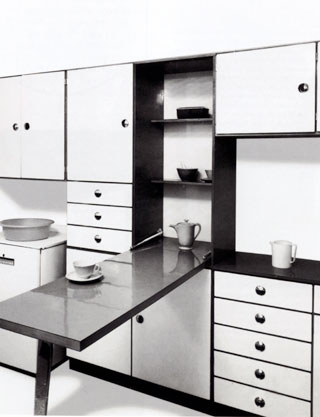

Augusto Magnaghi for Saffa, Modular kitchen, c. 1953
Top: Giovanni Gariboldi for Richard Ginori, Colonna set, 1954
1954 was an important year in the history of Italian design, marking the birth of the Compasso d'Oro, an award thought up by Gio Ponti and sponsored by the great Milanese department store "La Rinascente" to boost research and industrial production and promote Italian design. Designers were asked to make prototypes that met the demand for practicality and synthesis, using cutting-edge materials and procedures.
One of the product design winners was the Colonna ceramic table set, designed by Giovanni Gariboldi for Richard Ginori, which stood out for its extremely innovative concept based on a stackable design, modularity, the multipurpose use of different pieces and vertical storage so as to take up as little room as possible.
The design was the result of research into reduced costs, functionality and minimal footprints in new modular kitchens: a powerful icon of the new world. Modern crockery that replaced the sets of the past: decorated, fragile and bulky. Moreover, the decision to make it from Ariston porcelain, a less sophisticated material than traditional porcelain, but harder, more resilient and economical, made it possible to keep the costs of the set down.
